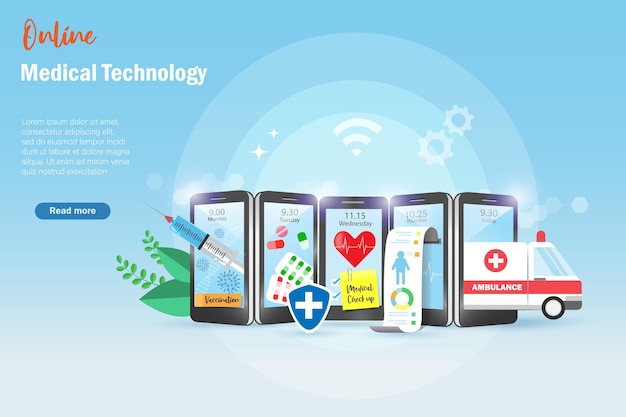The Increase of Subscription-Based Medical Care and Its Effect On Patient Treatment
As medical care advances, the subscription-based design is acquiring grip, promising to revolutionize client treatment by supplying predictability and ease of access. The potential for these models to improve health care shipment increases pressing concerns regarding their long-lasting sustainability and inclusivity. Are these membership services the future of medical care, or do they risk leaving susceptible populations behind?
Comprehending Membership Health Care Designs
Grasping the concept of registration healthcare designs entails analyzing a transformative technique to medical solutions that stresses cost and ease of access. These designs, commonly referred to as straight medical care (DPC) or attendant medicine, have emerged as innovative alternatives to typical fee-for-service healthcare systems. Subscription healthcare allows people to pay a set regular monthly or yearly charge for a specified set of medical services, which might include limitless workplace brows through, regular exams, and fundamental laboratory examinations, without the demand for traditional insurance invoicing.
The framework of registration health care models is made to simplify person care by getting rid of third-party payers and intricate payment codes, consequently reducing administrative worries. Health care suppliers can focus extra on individual treatment, cultivating stronger patient-provider relationships. This version likewise advertises preventative care by urging normal brows through, as the monetary challenge of per-visit costs is eliminated.
The registration version frequently encourages doctor to handle smaller sized person panels, enabling even more individualized care. It lines up economic incentives with patient wellness end results, as suppliers are motivated to maintain client contentment and well-being. On the whole, comprehending registration healthcare models needs identifying their potential to improve just how treatment is provided and accessed.
Benefits for People and Suppliers

For providers, subscription-based designs use the chance to grow patient-provider partnerships. With a constant revenue stream, health care experts can devote even more time per person, causing a more extensive and customized treatment experience. This model likewise lowers dependence over person quantities, relieving exhaustion and improving task contentment. The focus on preventative treatment within subscription strategies can lead to much better patient end results and minimized lasting health care prices. By concentrating on continuous care, service providers can address problems prior to they escalate, inevitably profiting the medical care system all at once by reducing the burden on emergency situation and acute care services.
Obstacles and Issues
While subscription-based medical care models existing various benefits, they also come with a set of difficulties and issues that need to be dealt with. This elevates moral inquiries concerning equitable accessibility to health care solutions.
Financial sustainability of subscription-based designs is an additional concern. Companies must stabilize the set income from memberships with the variable prices of healthcare services, which may fluctuate because of unpredicted medical needs. This can create pressure to restrict solutions or boost charges, potentially impacting client complete satisfaction and care quality.
Furthermore, governing oversight of subscription-based healthcare versions is still progressing. The absence of standard structures can result in irregular solution quality and responsibility, complicating efforts to guarantee person security. The combination of modern technology-- typically a keystone of these models-- raises concerns about information personal privacy and protection, as delicate patient information might be susceptible to violations. Dealing with these obstacles is critical for the equitable and effective application of subscription-based medical care.
Influence on Patient-Doctor Relationships
One substantial impact of subscription-based healthcare designs on patient-doctor relationships is the potential for enhanced connection and customized care. By taking on a registration version, doctors can take care of a smaller client panel, enabling more dedicated time with each person. This boosted accessibility cultivates a deeper understanding of a client's case history, way of living, and preferences, enabling a lot more tailored treatment plans and treatments.

Nevertheless, it is essential to identify that while subscription-based versions might profit those that can manage them, they can unintentionally expand medical care disparities. People that are incapable to participate in these designs may experience lower access to individualized treatment, possibly influencing their connections with healthcare carriers. Thus, while the subscription model supplies appealing advantages for patient-doctor connections, it additionally positions difficulties that require to be resolved to make sure equitable healthcare accessibility.
Future of Health Care Accessibility

The role of modern technology can not be overlooked in this transformation. Telemedicine platforms and electronic health and wellness records promote smooth interaction between patients and doctor, damaging down geographical and logistical obstacles. Furthermore, innovations in expert system and information analytics can even more customize medical treatment by forecasting person requirements and maximizing therapy plans.
Nevertheless, the future of medical care useful reference gain access to likewise provides obstacles, such as making certain equity throughout various socio-economic teams. Policymakers and doctor need to team up to link the digital divide, making certain that subscription-based designs remain affordable and inclusive. As these systems mature, they hold the guarantee of making healthcare more easily accessible, efficient, and patient-centric.
Verdict
Subscription-based health care versions are improving patient treatment by supplying a steady cost framework and improving access. These versions enhance patient-provider connections with individualized treatment and normal check outs, highlighting preventative wellness. Despite these benefits, difficulties such as accessibility concerns for low-income populaces and the requirement for equitable healthcare options continue. The rise of subscription-based medical care urges aggressive person involvement, which has the potential to enhance individual results and satisfaction, signaling a transformative shift in health care distribution.
As health care advances, the subscription-based version is getting traction, promising to transform patient treatment by providing predictability and accessibility.Subscription-based medical care versions provide distinctive benefits for both people and providers, enhancing the overall medical care experience.As medical care systems develop, the future of health care accessibility often pivots on the assimilation of cutting-edge designs and innovations.Subscription-based healthcare models are improving client treatment by offering a secure price structure and boosting accessibility. The rise of subscription-based healthcare encourages positive client involvement, which has the prospective to boost individual results and complete satisfaction, signaling a transformative change in health care shipment.